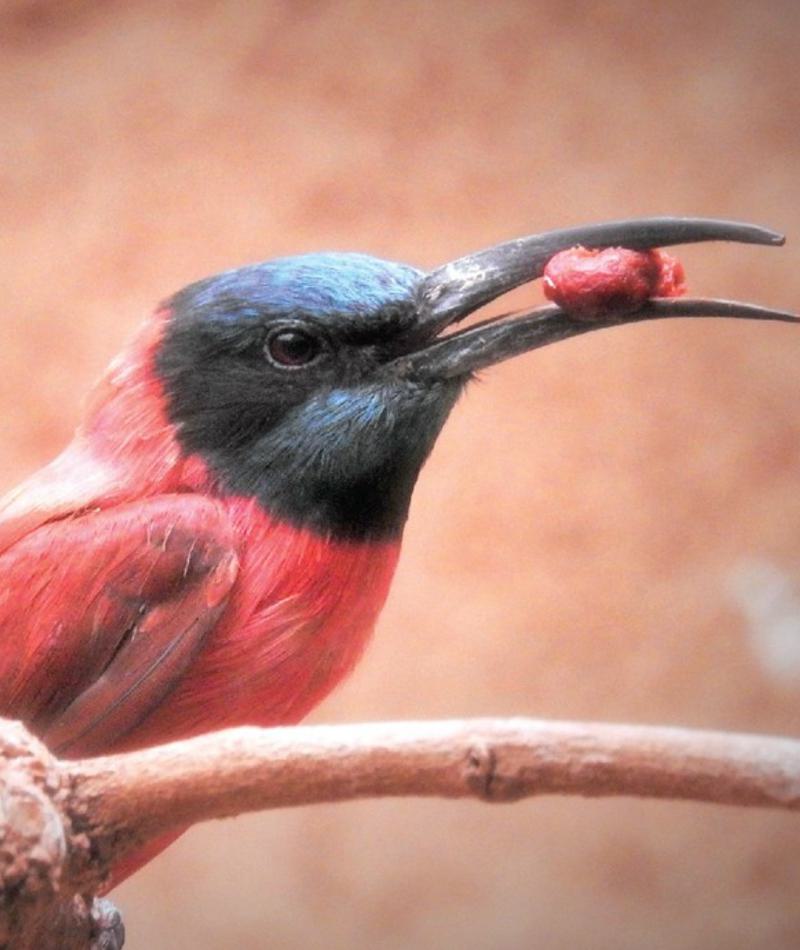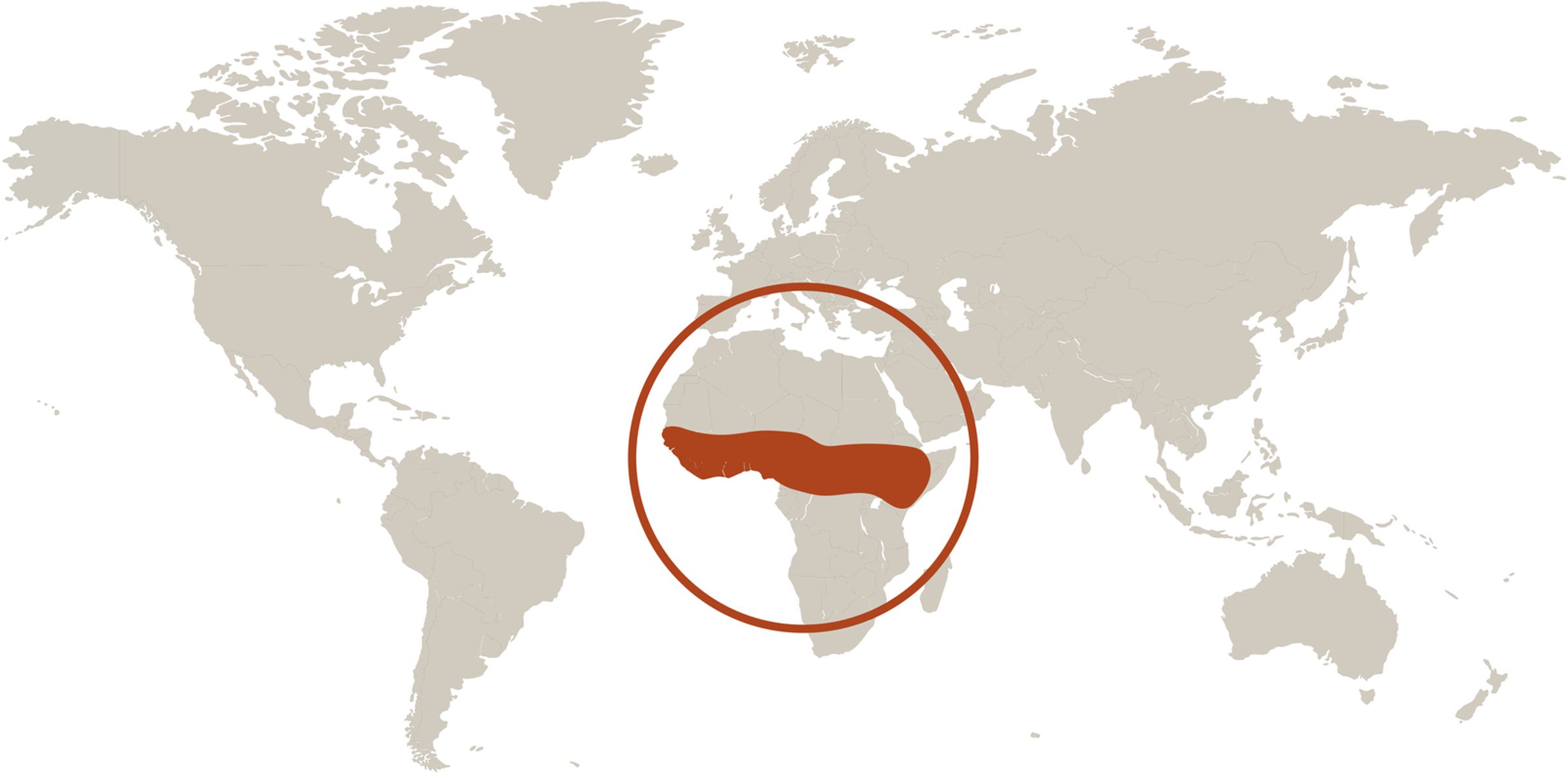
Carmine Bee-eater
Merops nubicus nubicus
Did you know?
- They sometimes feed on other insects as they fly high in the sky, and they make use of any opportunity they can to catch insects on the ground.
- Some birds ride on the backs of large mammals or fly next to moving vehicles.
- Carmine bee-eaters nest in deep holes dug into stream banks.
- A female typically lays two to five eggs.
We are Family
Carmine bee-eaters can live in colonies of over 100 members. Juvenile bee-eaters will help their parents by feeding younger chicks.
What's for Dinner?
As their name suggests, carmine bee-eaters' favorite foods are bees and wasps. They manage to eat them by rubbing the insects against a perch to squeeze out the venom, then swallowing them whole.
Threat Level
- Unknown
- Common
- Near Threatened
- Threatened
- Endangered
- Critically Endangered
- Extinct in the Wild
Common
The Carmine Bee-eater is widespread and abundant.
Range
Sub-Saharan Africa
Habitat
Open woodlands, savannas, arid acacia steppe, grasslands

We care about carmine-bee eaters
The Saint Louis Zoo supports carmine-bee eaters in the Bird House at the Zoo. Learn more about how we are helping wildlife around the world.
Find this animal in Historic Hill

SAINT LOUIS ZOO ZONE
Historic Hill
Historic Hill is a lovely stroll through one of the oldest parts of the Saint Louis Zoo. From the 1904 World’s Fair Flight Cage to the Spanish architectural flavor of the 1920s in the Bird House, Primate House and Herpetarium to the finishing touches of our thoroughly modern exhibits, this area of the Zoo has a unique ambiance and a nostalgic history that make it a great destination.

